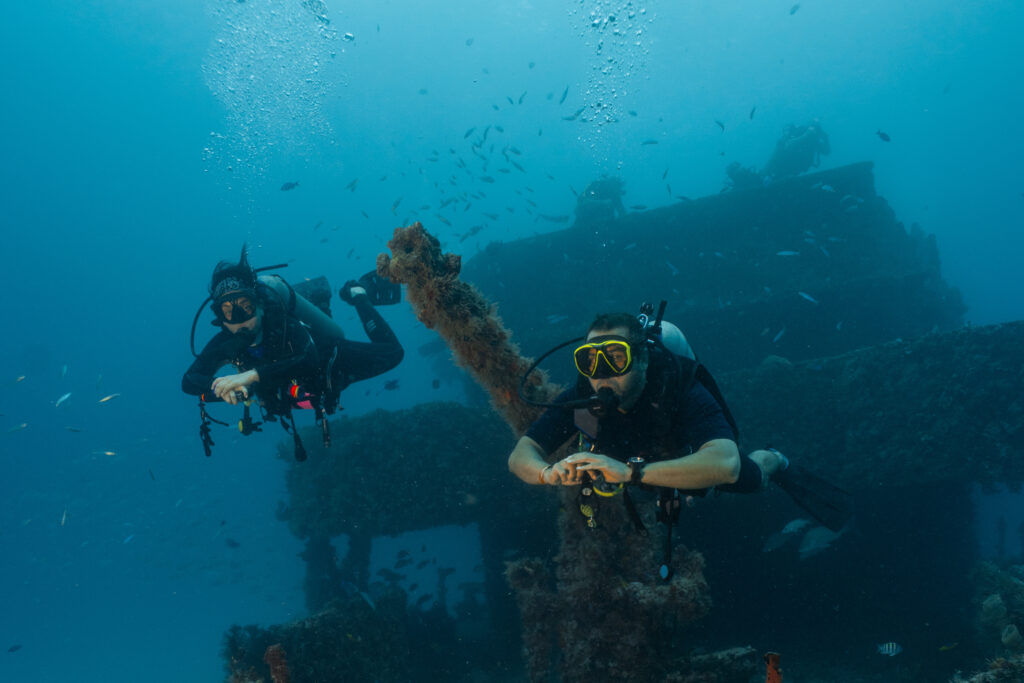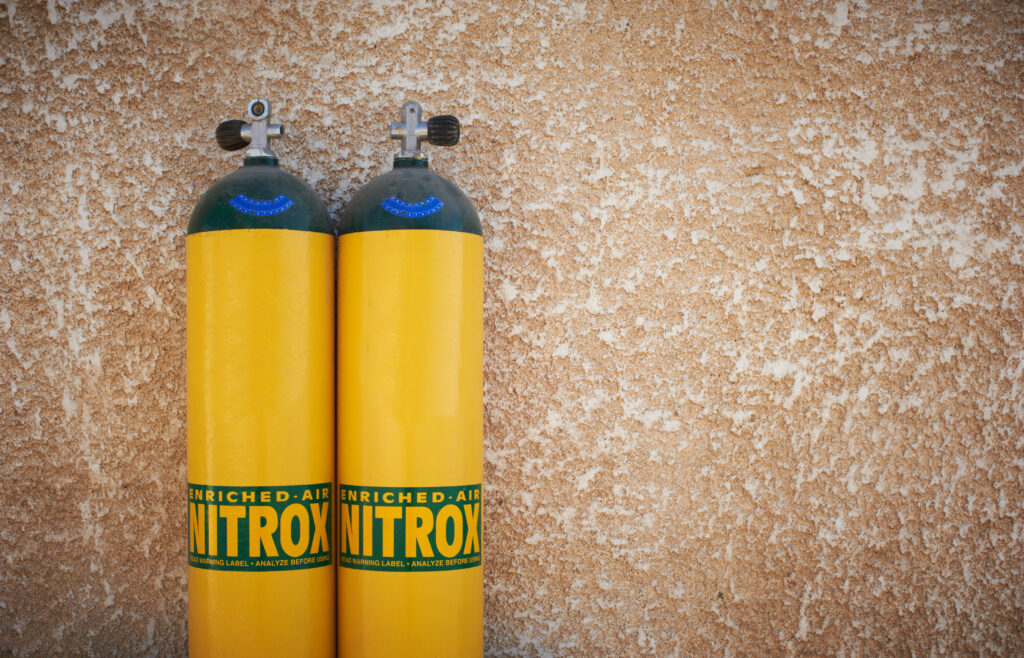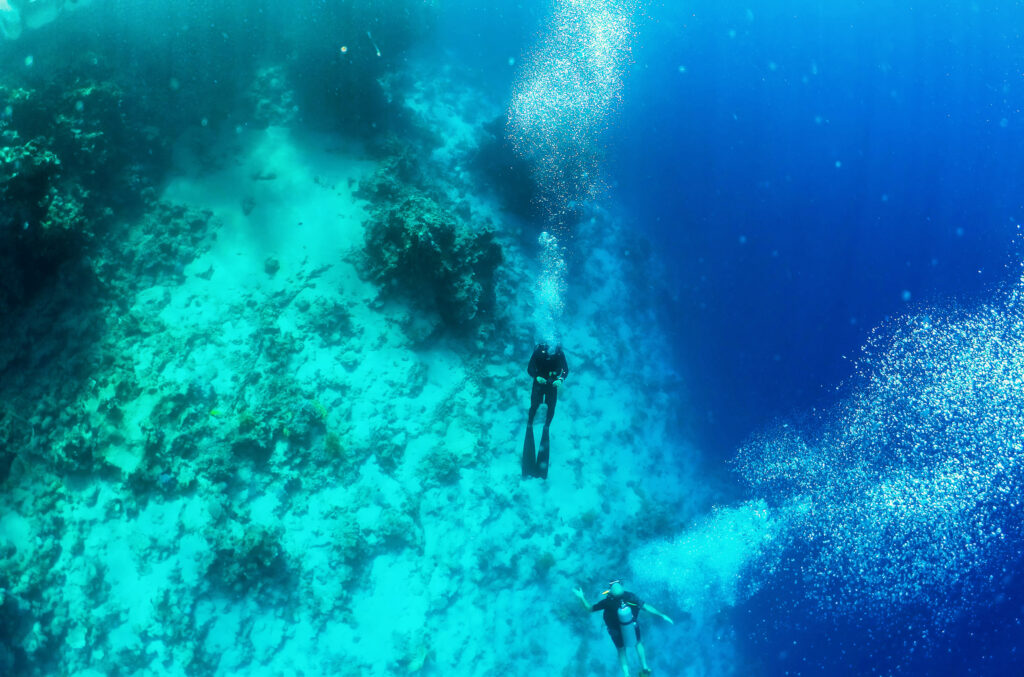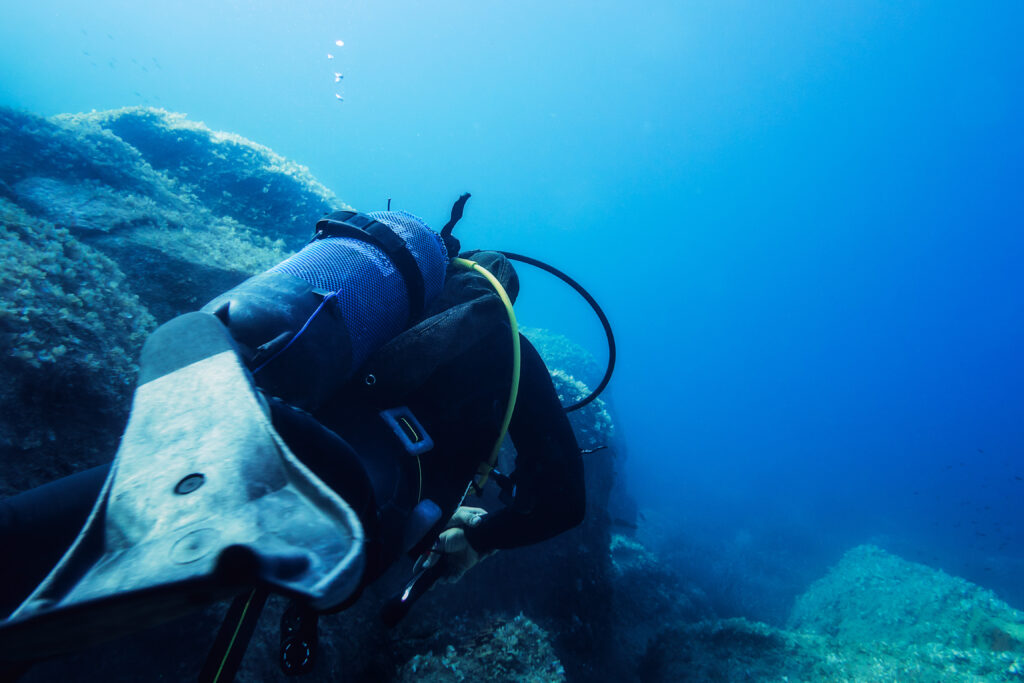What is a Deco Mix?

Decompression mix, or deco mix, is a specialized gas mixture used in scuba diving to facilitate safer and more efficient decompression during ascent. Decompression is a critical phase in diving where accumulated inert gases, primarily nitrogen, are safely expelled from a diver’s body to avoid decompression sickness (DCS). Deco mixes are tailored to optimize the elimination of these gases, particularly during deep or prolonged dives where standard air might not suffice. Understanding and correctly using deco mixes can significantly enhance a diver’s safety, reducing the risk of DCS and other diving-related ailments.
What is Heliox?

Heliox is a breathing gas mixture composed of helium and oxygen, widely used in deep-sea diving due to its unique properties that improve safety and performance under extreme conditions. Unlike standard air, which consists of approximately 78% nitrogen and 21% oxygen, Heliox replaces the nitrogen with helium. This substitution is crucial in mitigating the adverse effects of nitrogen narcosis and oxygen toxicity that divers can experience at greater depths. Heliox has been a game-changer for technical and commercial divers, enabling them to work and explore at depths that would otherwise be highly hazardous.
What is Nitrox in Scuba Diving?

What is Nitrox in Scuba Diving? Nitrox, or Enriched Air Nitrox (EANx) or simply EAN, is a breathing gas mixture consisting of nitrogen and oxygen in which the proportion of nitrogen is less than the naturally occurring 78% found in atmospheric air. The primary benefit of using nitrox in scuba diving is reduced nitrogen absorption, […]
What is decompression in Scuba Diving?

Decompression is a critical aspect of scuba diving and refers to the process by which a diver transitions from a higher ambient pressure to a lower ambient pressure during their ascent to the surface. This process is essential for the safe elimination of dissolved inert gases, such as nitrogen, from the body’s tissues. Failure to properly decompress can result in decompression sickness (DCS), a potentially life-threatening condition. This entry will discuss the principles of decompression, the physiological implications, decompression procedures, and safety considerations for scuba divers.
What is Pressure?

Pressure is a fundamental concept in physics, defined as the force exerted per unit area. In the context of scuba diving, understanding pressure and its effects is crucial for safety and efficiency. Pressure plays a pivotal role in determining how divers experience the underwater environment, affecting everything from breathing to buoyancy. As divers descend into the water, the pressure increases, impacting both their equipment and bodies in significant ways. This article will discuss the principles of pressure, its effects on the human body, the health risks associated with changes in pressure, techniques for managing these changes, and the equipment designed to withstand them.
What is Rapture of the Deep?

Rapture of the Deep, commonly known as nitrogen narcosis, is a condition experienced by scuba divers at significant depths. This phenomenon, resulting from the increased partial pressure of nitrogen when diving, can lead to a range of symptoms that affect cognitive and motor functions. Understanding Rapture of the Deep is crucial for divers to ensure safe practices and avoid potentially hazardous situations underwater.
What is No Fly / No Fly Time?

No Fly Time, also referred to as No Fly Zone or No Fly Period, is the recommended interval between the completion of a dive and boarding an airplane. It is an essential precautionary measure that helps prevent Decompression Sickness (DCS) and other altitude-related issues that may arise from flying too soon after scuba diving. The importance of observing No Fly Time stems from the physiological effects of pressure changes on the body, both during diving and air travel. Failure to allow sufficient time for these changes to normalize can lead to serious health complications.
What is Partial Pressure?

Partial pressure is a fundamental concept in physics and chemistry, particularly significant in the context of scuba diving. It refers to the pressure exerted by a single type of gas in a mixture of gases. Understanding partial pressure is crucial for divers as it influences how gases are absorbed, transported, and expelled in the human body under varying underwater conditions. This concept helps in comprehending how different gases behave under increased pressures encountered at depth and is essential for ensuring safety and preventing diving-related illnesses.
What is a Scuba Diving Reel?

A scuba diving reel is an essential piece of equipment for divers, providing a reliable way to deploy and manage a line underwater. Reels are used to help divers maintain orientation, navigate, and communicate in a variety of underwater environments, from open water to complex cave systems. The versatility and functionality of reels make them a critical component of safe and effective diving practices.
What is the No-Decompression Limit (NDL)?

The No-Decompression Limit (NDL) is a fundamental concept in scuba diving, representing the maximum time a diver can spend at a specified depth without the need for mandatory decompression stops during ascent. Understanding and adhering to NDLs is essential for dive planning and ensuring the safety of divers. This entry will explore the concept of NDL, its importance, how it is calculated, and its implications for diving practices.
